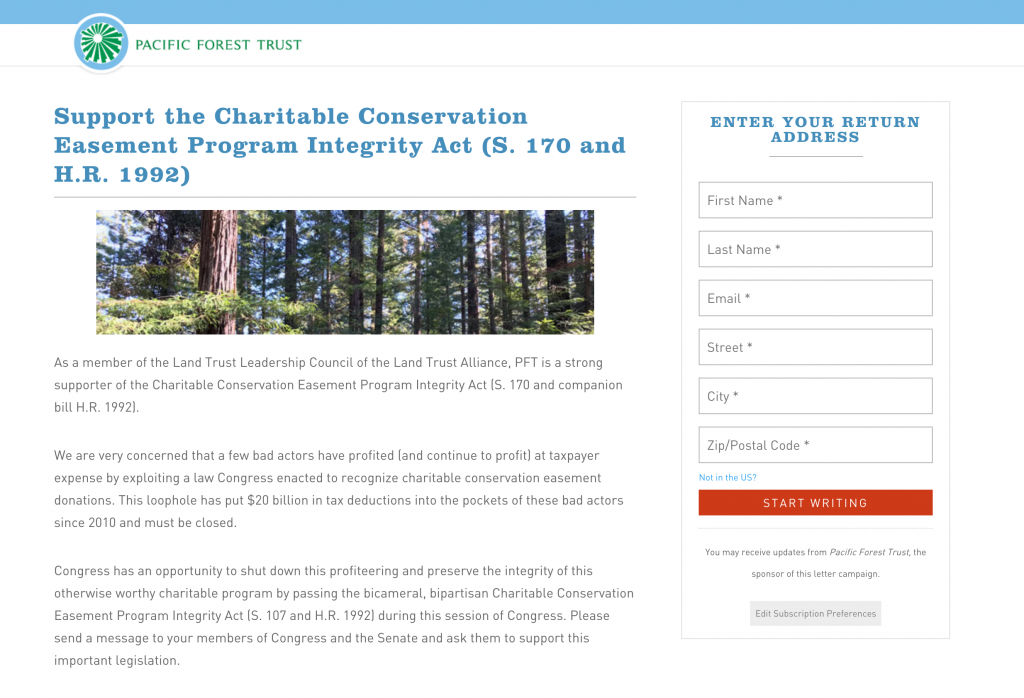Between July and December 2018, I successfully implemented PFT’s first unified suite of digital organizing tools, launching the organization on The Action Network.
The organization was already using Blackbaud’s online donor database eTapestry (eTap), which had some eCRM (electronic Constituent Relationship Management) features, but they were impractical to launch and use. In evaluating potential solutions for advocacy, email, fundraising, event management, and online contact management, The Action Network (AN) emerged as the best solution for PFT, in part because of its incredible value relative to its functionality. The low cost allowed PFT to launch quickly. A non-profit itself, AN had a growing and competitive feature set.
I managed and completed this process effectively on my own, having led eCRM launches for CLCV on both Salsa and Luminate Online. I built page and email wrappers based on PFT’s existing templates (simplifying the page templates to remove distractions that would suppress form completion) and, with the help of other PFT staff, completed the transition away from using Constant Contact.
Launching AN allowed PFT to onboard large acquisitions, establish an online advocacy program (such as the HB 2020 campaign), easily manage event RSVPs, and segment emails more efficiently than ever before. This helped the organization target messages more quickly and precisely for better results (whether by open rate, actions taken, or geography). In turn, it allowed PFT to narrow down its list of potential new donors in a granular way.
My recommendation before leaving PFT was for them to hire a company that was familiar with eTap to create an automated sync process between the two platforms. The low one-time cost quoted would have paid many dividends in staff time.
Here’s an example of a typical action page:
